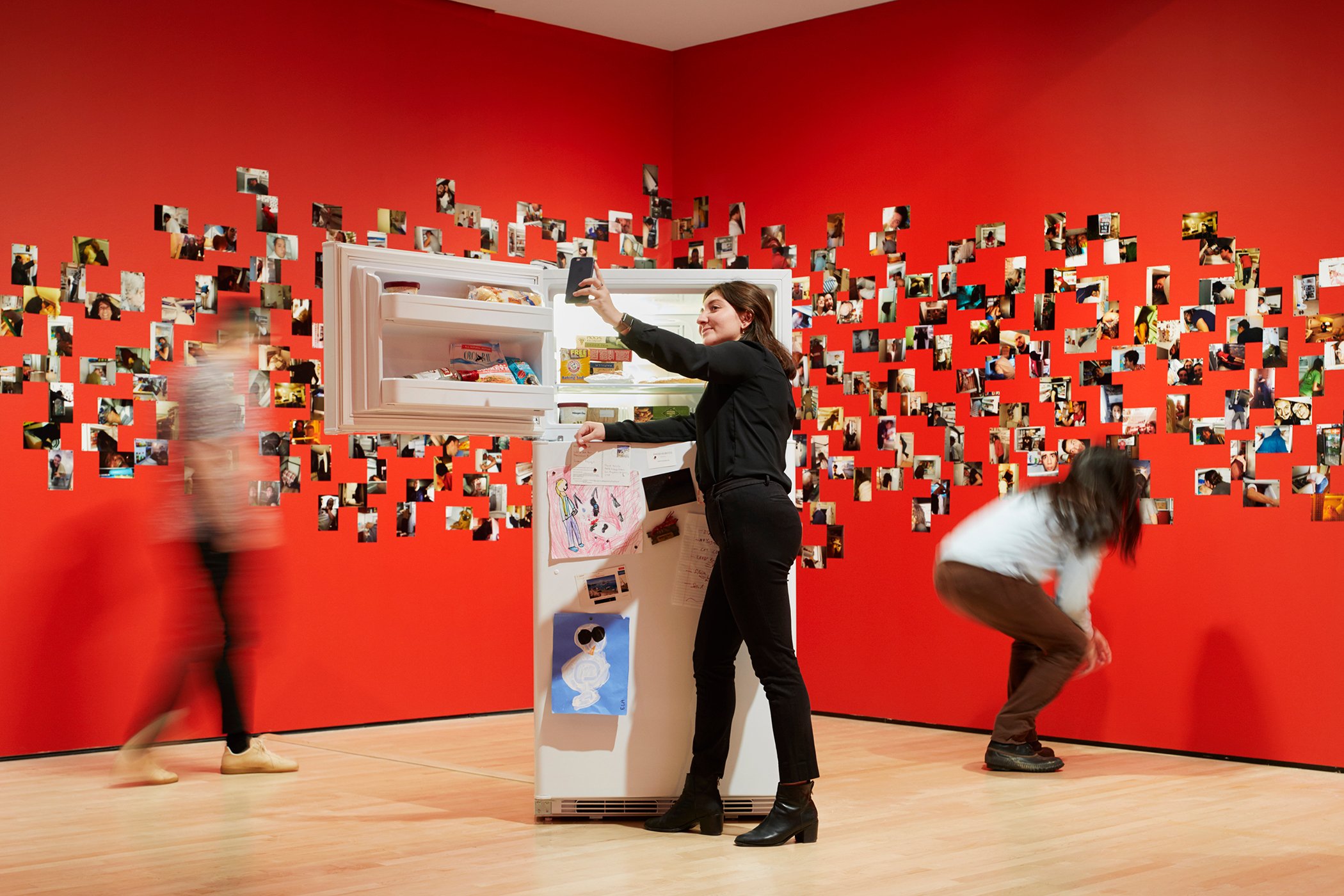
Earlier this year, an unimpressive picture of an egg became the most-liked Instagram photo of all time, smashing the previous record of 18 million likes. (As of now, the egg has been liked by over 53 million users.) It was, on the one hand, a silly social media stunt—and on the other, it was a testament to the fact that today, in a globalized, online world, a picture’s ability to be seen is often more valuable than what it depicts.
The equation is simple. Now, more than ever: popular pictures are better than good pictures.
This shift marks the third major revolution in the history of photography, according to curator Clément Chéroux and his new exhibition, “snap+share: transmitting photographs from mail art to social networks,” on view now at the San Francisco Museum of Modern Art.
Combining historical artifacts and photo-based works by artists such as On Kawara, Moyra Davey, and Lynn Hershman Leeson, the exhibition looks at the ways in which photographs have been shared since the advent of the medium.
“The evolution of photography has been described as a long quest for instantaneity,” the curator explains in a catalogue accompanying the show. In it, he charts the history of photography from the 19th century (when innovators were trying to shorten the duration of time it took to capture and print an image) to the 20th century (which saw the rise of recreational photography and instant film) all the way to our current moment.
“Today,” Chéroux writes, “we are unquestionably witnessing this third moment of the acceleration of photography… [It] cannot be reduced to shooting and printing. Its mode of existence is now defined by its production and its dissemination, that is, snap+share.”
Erik Kessels, 24HRS in Photos (2011), installation view, SFMOMA. Courtesy of the artist. © Matthew Millman Photography.
Nowhere in the exhibition is this clearer than in Erik Kessels’s installation, 24HRS in Photos (2011). As the title suggests, the Dutch artist printed out every single image uploaded to the photo-sharing site Flickr over the course of one day and dumped them into the gallery—a clever literalization of the oft-quoted fact that more photos are produced now on any given day than were made in the entirety of the 20th century. Visitors are asked to navigate hundreds of thousands of dirty photos as they pass through.
“The internet and social media are made of up of old ideas that are shared instantaneously with more people,” says Chéroux, who only joined Instagram two years ago. “It’s all about the culture of the plus. It’s quicker, it’s more people, the reactions are instant.”
Indeed, the exhibition emphasizes that the tropes of image-making and sharing are not so new. In fact, Chéroux argues, they’re as old as the medium of photography.
David Horvitz, 241543903, (2009–ongoing). Courtesy of the artist and ChertLüdde, Berlin. © David Horvitz.
“Since we started working on this exhibition almost two years ago, we did not want to do just a show about what’s going on with social media,” the curator explains. “We really wanted to think about this evolution within the context of the whole history of photography, and show that what’s going on today with social media is part of the same impulse as sending a postcard of a photograph in an envelope. Yet, at the same time, it’s not.”
Take the meme—a symbol, in many ways, of internet culture. Chéroux traces the phenomenon back 100 years, when Duchamp painted a mustache on the Mona Lisa. Or look at David Horvitz’s ongoing project 241543903, a meme-based work that has a lot in common with Conceptual practices of the 1960s and 70s.
In 2009, Horvitz took a photo of himself with his head in a freezer and posted it online accompanied by a caption that read: “Take a photograph of your head inside a freezer. Upload this photograph somewhere on the Internet using the tag #241543903.” With a refrigerator installed in the middle of a gallery, Chéroux’s show goads viewers into participating in the work, reminding us of the larger systems at play in the circulation of images.
Moyra Davey, Subway Writers I (2011). Courtesy of greengrassi, London. © Moyra Davey. Photo: Marcus Leith.
“When I first became interested in photography in the 1980s, everybody was focused on the making of the image,” Chéroux says. “It was all about: ‘How did you make that great photograph?’ Now, the question of the relationship between the photographer and his or her public is much more important. And I think that’s good. It helps us to understand that the photographic act is a complex phenomenon.”
Back then, he admits, it would have been hard to imagine a show like this. But it was just as hard to imagine vernacular photography displayed in a museum before MoMA’s landmark 1944 show, “The American Snapshot”; similarly, it was difficult to picture color photographs hanging in the same galleries that display Picasso and Matisse before William Eggleston broke the mold in 1976.
Is it reasonable, then, to expect pictures of Kim Kardashian and LOLcats to one day adorn museum walls? Could we see a picture of an egg in the SFMOMA? Chéroux thinks so: “Why not!”
Installation view of “snap+share: transmitting photographs from mail art to social networks,” 2019. Courtesy of SFMOMA. Photo: © Matthew Millman Photography.
“snap+share: transmitting photographs from mail art to social networks,” on view through August 4, 2019 at the San Francisco Museum of Modern Art